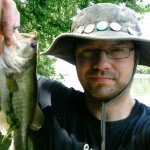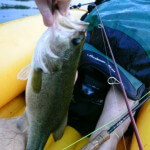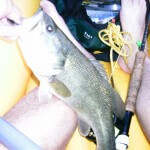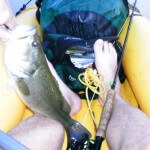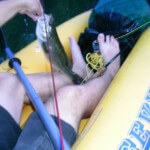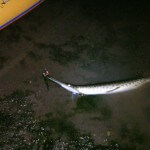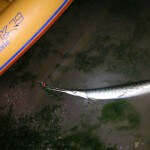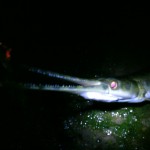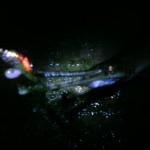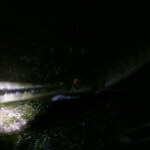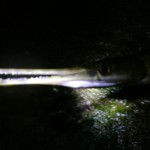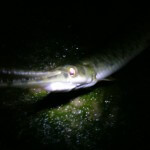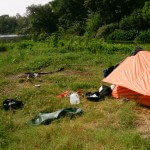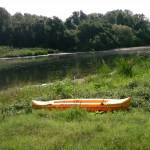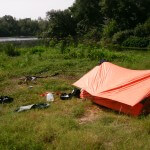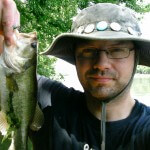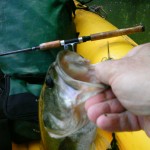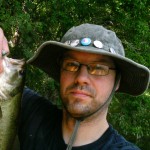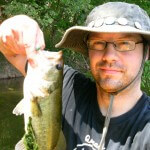For a while now I’ve been fascinated with the stretch of the Colorado River downstream from Lady Bird Lake. At one point, my friend Peter Gabriel and I planned on taking a float trip down the river from the Montopolis bridge to the 973 bridge near the airport. It was a genius idea because the 973 bridge is still within the Austin city bus system. We figured we could spend a couple of hours sitting in inflatable pool chairs, drinking Lonestar tallboys, and then we could just take the #350 bus back to our bikes.
It was a genius idea except that the stretch of the river in question is about ten miles without public access points or a reliable current, as this resource page will prove. Luckily, when Mr. Gabriel and myself set out to do this, the dam at Pleasant Valley was letting out a mere trickle of water, something in the 80cfs range. So instead of being washed away on a twelve-hour marathon of floating with only beer to feed us, we barely made it a quarter of a mile before giving up and heading back.
So the next time I attempted this trip, it was with my inflatable kayak, a flimsy contraption of vinyl bladders and slow leaks. This made the travel time a lot faster, but I had still under-estimated the amount of time it would take to paddle that stretch (and this from a guy who paddled the Mississippi River in its entirety). I started out at around 2pm, and I didn’t get out of the water until after 9pm. I stopped to do quite a lot of fishing, I wasn’t paddling the whole time, but it still meant that I had to paddle by the light of the full moon for miles, before calling the Yellow Cab company with my dying cellphone and having them fail to pick me up for an hour, despite being right next to the airport where there were at least a hundred cabs. But that’s a gripe for another day.
But it’s an amazing stretch of water that river. You’re essentially right at the edge of the Austin city limits, still well within the Austin metropolitan area, but you can’t see signs of human life or hear traffic for long stretches. Other stretches are right under the flight path, but a lot of it is wild, filled with osprey and water fowl.
When the sun set over the Colorado River and the wind calmed, it took the aura of a fairyland, a place where people were rare observers of a wild tableau. I could see fish splashing across the glassy surface of the water, disturbing the orange mirror of the sky. Most of the splashes were no doubt gar, but I did see bass as well, some of them splashing in the shallows, half their backs out of the water as they chased their prey.
The next time I visited that stretch, it was with the explicit intention of staying overnight, so as not to hurry too hard to get from the put-in to the take-out. I took a Car2go straight from work to the river, stopping only briefly at the supermarket to pick up sandwich meat, american cheese, tortillas, and water. This was essentially the same diet that I had perfected while motorcycling around the country. It’s food that cannot spoil, get squashed, or require preparation. You just roll it all up and you have yourself a meal. For water I had two one-gallon jugs of fifty-nine cent spring water. I’ve learned that there’s nothing worse than being in the middle of nowhere and running out of water.
Even though this trip was all about giving myself plenty of time to fish, I didn’t make it as far as I would have hoped before dark, because I had to prospect every piece of structure and every little eddy I passed with my ultralight and spinner.
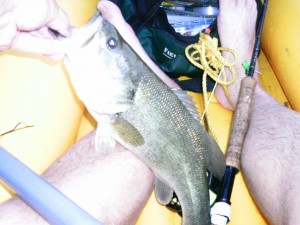
Around sunset I caught a very nice bass, one of the largest I’ve ever had. It caught the spinner and dove like a submarine in ten feet of crystal clear water. Later on, as I was cleaning the fish, I found in its stomach a half-digested sunfish and several twigs. If she had been striking at twigs, then my presentation might have looked pretty good in comparison.
Like one would expect, night fell and there was no good place to stop for the night. But there was a full moon, and its light was virtually blinding. It was bright enough that I could undo tangles in my fluorocarbon line and I spot every ripple of submerged logs and boulders. There was only the sound of my paddles, and the deafening screaming of millions of frogs.
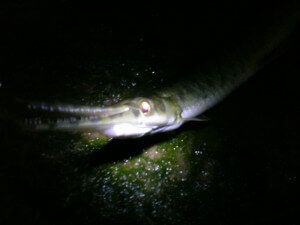
I made camp on an island far short of where I had intended. Instead of making it half-way, I had only gone about a third of the route. And even though I had found a place to stop for the night, I couldn’t stop fishing. I continued to wade and cast by the light of the moon. That’s when I caught my first gar.
The trick with gar is they have a bony beak and they are finicky about swallowing a bait. It’s rare for a hook to set. It’s common to have them strike at a lure and then drop it at the first tug of the line. It feels a little like the lure getting caught in weeds and breaking free in an instant.
By sheer luck, my inline spinner hooked a gar. It wasn’t a very big one, but I had to play it as I pulled it into shore. I couldn’t tell what it was until I had actually landed it. There’s few things quite as disconcerting as standing knee-deep in water and cranking something snake-like and as long as your arm closer to you.
I took a long look at it before I worked it free of the hook with my Leatherman needlenose pliers. It had big glassy eyes that reflected the light of my headlamp like a cat’s. The head and snout had a definite reptilian aspect, and its thick scales gave it a particularly unappetizing trash-fish look.
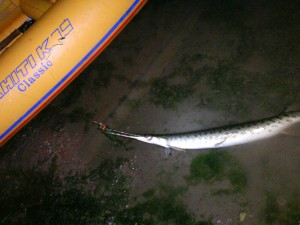
The following morning I slept late and took my time making camp. When I waded through some stagnant water I got attacked by leeches for the first time in Texas. Each leech was about three millimeters long and colored a dirty brown. A swarm of them covered my feet and did a stadium-style “The Wave.” I doubt if any of them were large enough to chew through my skin, which is why they didn’t trigger my squicky leech terror.
A kayak livery had recently set up on that stretch of the river, so the Saturday morning didn’t give me as much privacy as I would have liked. A few fisherman in river-sized bass boats also passed by me.
As I made myself a breakfast of tortillas and processed sandwich meat, I watched as bass launched themselves three feet into the air in an attempt to eat the swarms of hovering magenta dragonflies. I couldn’t tell if the bass were particularly successful. It looked a little like the reverse of an osprey’s dive.
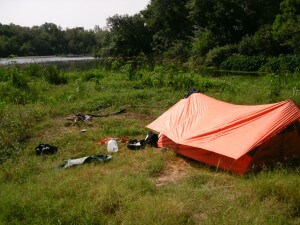
By the time I got the tent packed up, the dam had opened upstream and the river’s flow had raised a foot and doubled in speed. This meant that I didn’t have to paddle as much for the remainder of the trip, but it also meant that the river was choked with algae and weeds that were swept up in the increased current. It was impossible to use a spinner for more than a few feet before it became hopelessly fouled in gunk. I had some luck with a giant crazy-leg foam ant, catching another decent-sized bass off the surface, but that would have been a good time to use the rubber worms which I’ve never been proficient with.
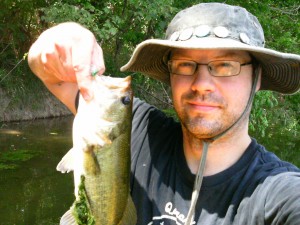
A short walk from the 973 river access took me to the bus stop, where I became that weird guy with a giant dry sack with some fishing rods poking out the top. I took the 350 bus back to Hyde Park, and then took a tiny car the rest of the way home, finally validating my original plan for a public transportation river adventure.
